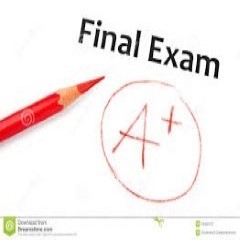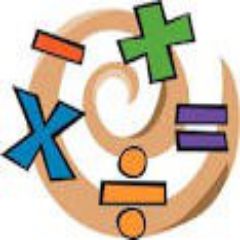SAINT MBA560 MOD 2 TEST ALL ANSWER CORRECT 20 20
Question1. Question : Baxter Company’s merchandise inventory at the start of 2010 was $85,000. The company purchased inventory during 2010 in the amount of $323,000, and its inventory at the end of the year was $102,000.
What was Baxter’s Cost of Goods Sold for 2010?
Student Answer:
$391,000
$306,000
$408,000
$289,000
Points Received: 2 of 2
Comments:
Question 2. Question : The Red Valley Company maintains perpetual inventory records. Although its inventory records indicated $18,000 in the inventory, a physical count showed only $16,250. Which of the following answers indicates the effect of the necessary write-down?
Row Assets = Liab. + Equity Rev - Exp. = Net Inc. Cash
One (1,750) = NA + (1,750) NA - 1750 = (1,750) NA
Two NA = 1750 + (1,750) NA - 1750 = (1,750) NA
Three 16,250 = NA + 16,250 16,250 - NA = 16,250 16,250 IA
Four (18,000) = NA + (18,000) (18,000) - NA = (18,000) NA
Student Answer:
Row One
Row Two
Row Three
Row Four
Points Received: 2 of 2
Comments:
Question 3. Question : Product costs are also referred to as:
Student Answer:
period costs.
selling and administrative expenses.
operating expenses.
inventory costs.
Points Received: 2 of 2
Comments:
Question 4. Question : Based on common size income statements, which of the companies A, B, C, or D spent, relative to sales, the most on operating expenses?
Company A B C D
Sales $40,000 $60,000 $50,000 $90,000
COGS 24,000 36,000 30,000 67,500
Gross Margin 16,000 24,000 20,000 22,500
Operating Expenses 4,800 5,400 5,000 6,300
Net Income 11,200 18,600 15,000 16,200
Student Answer:
Company A
Company B
Company C
Company D
Points Received: 2 of 2
Comments:
Question 5. Question : Gruver Company maintains perpetual inventory records. The company's inventory account had a $5,500 balance as of December 31, 2010. On that date, a physical count of inventory showed only $5,300 of merchandise in stock. The write-down to recognize the missing inventory will:
Student Answer:
decrease assets.
increase expense.
decrease equity.
all of the above.
Points Received: 2 of 2
Comments:
Question 6. Question : Merchandising businesses:
Student Answer:
manufacture the goods they sell.
generate revenue primarily by providing services to customers.
buy the merchandise they sell from suppliers.
include dry cleaning companies and law firms.
Points Received: 2 of 2
Comments:
Question 7. Question : A purchase of merchandise for cash is a(n):
Student Answer:
asset source transaction.
asset exchange transaction.
asset use transaction.
claims exchange transaction.
Points Received: 2 of 2
Comments:
Question 8. Question : During the month of March, Wang Company purchased merchandise inventory for cash in the amount of $6,200. Which of the following represents the effects of this transaction on Wang’s financial statements?
Student Answer:
Row One
Row Two
Row Three
Row Four
Points Received:
Comments:
Question 9. Question : Lynx Company purchased $4,000 of merchandise on account and sold the merchandise to a customer for $7,000 cash. What is Lynx’s gross margin and the net change in cash flow from operating activities as a result of these transactions?
Cash Flow From
Row Gross Margin Operating Activities
One $7,000 $4,000 inflow
Two $3,000 $7,000 inflow
Three $3,000 $7,000 outflow
Four $4,000 $4,000 outflow
Student Answer:
Row One
Row Two
Row Three
Row Four
Points Received: 2 of 2
Comments:
Question 10. Question : Which of the following statements concerning internal controls is true?
Student Answer:
Internal administrative controls are designed to limit the amount of funds spent on investments.
The control procedure, separation of duties, prohibits the employment of a husband and wife or other closely related parties within the same company.
Internal accounting controls are limited to the policies and procedures used to protect the company from embezzlement.
A strong internal control system provides reasonable assurance that the objectives of a company will be accomplished.
Points Received:
Comments:
Question 11. Question : To have a strong internal control system, a business must have good administrative controls. Administrative controls include:
Student Answer:
the reconciliation of the bank statement.
the accuracy of the recording procedures.
assessing compliance with company policies.
maintenance of accurate inventory records.
Points Received: 2 of 2
Comments:
Question 12. Question : Which of the following is not a procedure for the control of cash receipts?
Student Answer:
Immediate preparation of records of all cash receipts
Giving customers written receipts for all monies paid
Using prenumbered checks when paying company bills
Depositing cash in the bank frequently
Points Received:
Comments:
Question 13. Question : In a company's bank reconciliation, an outstanding check is a check that:
Student Answer:
is guaranteed for payment by the bank.
has been issued by the company but has not been presented to the bank for payment.
has been presented to the bank for payment but has not been reported on the bank statement.
has been written for an amount that is greater than the balance in the account holder's bank account.
Points Received: 2 of 2
Comments:
Question 14. Question : Which of the following is not a reason why a business needs strong internal controls over cash?
Student Answer:
A small volume of high-denomination currency represents a significant amount of value.
Ownership of cash is difficult to prove.
Cash has universal appeal.
Money is the common unit of measurement in business.
Points Received:
Comments:
Question 15. Question : Which of the following is an internal control procedure used to safeguard a company's assets?
Student Answer:
Timely deposits of cash receipts into a checking account
Separation of duties
Reconciliation of the bank statement
All of the above
Points Received: 2 of 2
Comments:
Question 16. Question : A bank deposit made on June 30 did not appear on the June bank statement. In doing the June bank reconciliation, this deposit in transit should be:
Student Answer:
subtracted from the unadjusted book balance.
added to the unadjusted bank balance.
subtracted from the unadjusted bank balance.
added to the unadjusted book balance.
Points Received: 2 of 2
Comments:
Question 17. Question : A merchandising firm's accounting system must allocate the Cost of Goods Available for Sale between:
Student Answer:
the Merchandise Inventory balance at the start of the period and the balance at the end of the period.
Cost of Goods Sold and the ending balance in Merchandise Inventory.
the beginning balance in Merchandise Inventory and Cost of Goods Sold.
Purchases of inventory and the ending balance in Merchandise Inventory.
Points Received:
Comments:
Question 18. Question : An effective system of internal control is designed to detect the following except for:
Student Answer:
collusion.
fraud.
theft.
irregularities.
Points Received: 2 of 2
Comments:
Question 19. Question : The following are strong internal control measures over cash disbursements except for:
Student Answer:
all checks should be prenumbered.
unused checks should be locked up.
the person approving the payment should also sign the check.
the payment must be recorded on the books by someone other than the check signer.
Points Received: 2 of 2
Comments:
Question 20. Question : Check no. 147 for $200 was outstanding as of September 30. In performing the September bank reconciliation, this outstanding check should be:
Student Answer:
subtracted from the unadjusted book balance.
subtracted from the unadjusted bank balance.
added to the unadjusted bank balance.
added to the unadjusted book balance.
SAINT MBA560 MOD 2 TEST (ALL ANSWER CORRECT) 20/20
Question1. Question : Baxter Company’s merchandise inventory at the start of 2010 was $85,000. The company purchased inventory during 2010 in the amount of $323,000, and its inventory at the end of the year was $102,000.
What was Baxter’s Cost of Goods Sold for 2010?
Student Answer:
$391,000
$306,000
$408,000
$289,000
Points Received: 2 of 2
Comments:
Question 2. Question : The Red Valley Company maintains perpetual inventory records. Although its inventory records indicated $18,000 in the inventory, a physical count showed only $16,250. Which of the following answers indicates the effect of the necessary write-down?
Row Assets = Liab. + Equity Rev - Exp. = Net Inc. Cash
One (1,750) = NA + (1,750) NA - 1750 = (1,750) NA
Two NA = 1750 + (1,750) NA - 1750 = (1,750) NA
Three 16,250 = NA + 16,250 16,250 - NA = 16,250 16,250 IA
Four (18,000) = NA + (18,000) (18,000) - NA = (18,000) NA
Student Answer:
Row One
Row Two
Row Three
Row Four
Points Received: 2 of 2
Comments:
Question 3. Question : Product costs are also referred to as:
Student Answer:
period costs.
selling and administrative expenses.
operating expenses.
inventory costs.
Points Received: 2 of 2
Comments:
Question 4. Question : Based on common size income statements, which of the companies A, B, C, or D spent, relative to sales, the most on operating expenses?
Company A B C D
Sales $40,000 $60,000 $50,000 $90,000
COGS 24,000 36,000 30,000 67,500
Gross Margin 16,000 24,000 20,000 22,500
Operating Expenses 4,800 5,400 5,000 6,300
Net Income 11,200 18,600 15,000 16,200
Student Answer:
Company A
Company B
Company C
Company D
Points Received: 2 of 2
Comments:
Question 5. Question : Gruver Company maintains perpetual inventory records. The company's inventory account had a $5,500 balance as of December 31, 2010. On that date, a physical count of inventory showed only $5,300 of merchandise in stock. The write-down to recogn...





Online Users
-
 Mastermind
Today
Mastermind
Today





A+ - Thank you!
Thanks for the positive feedback!